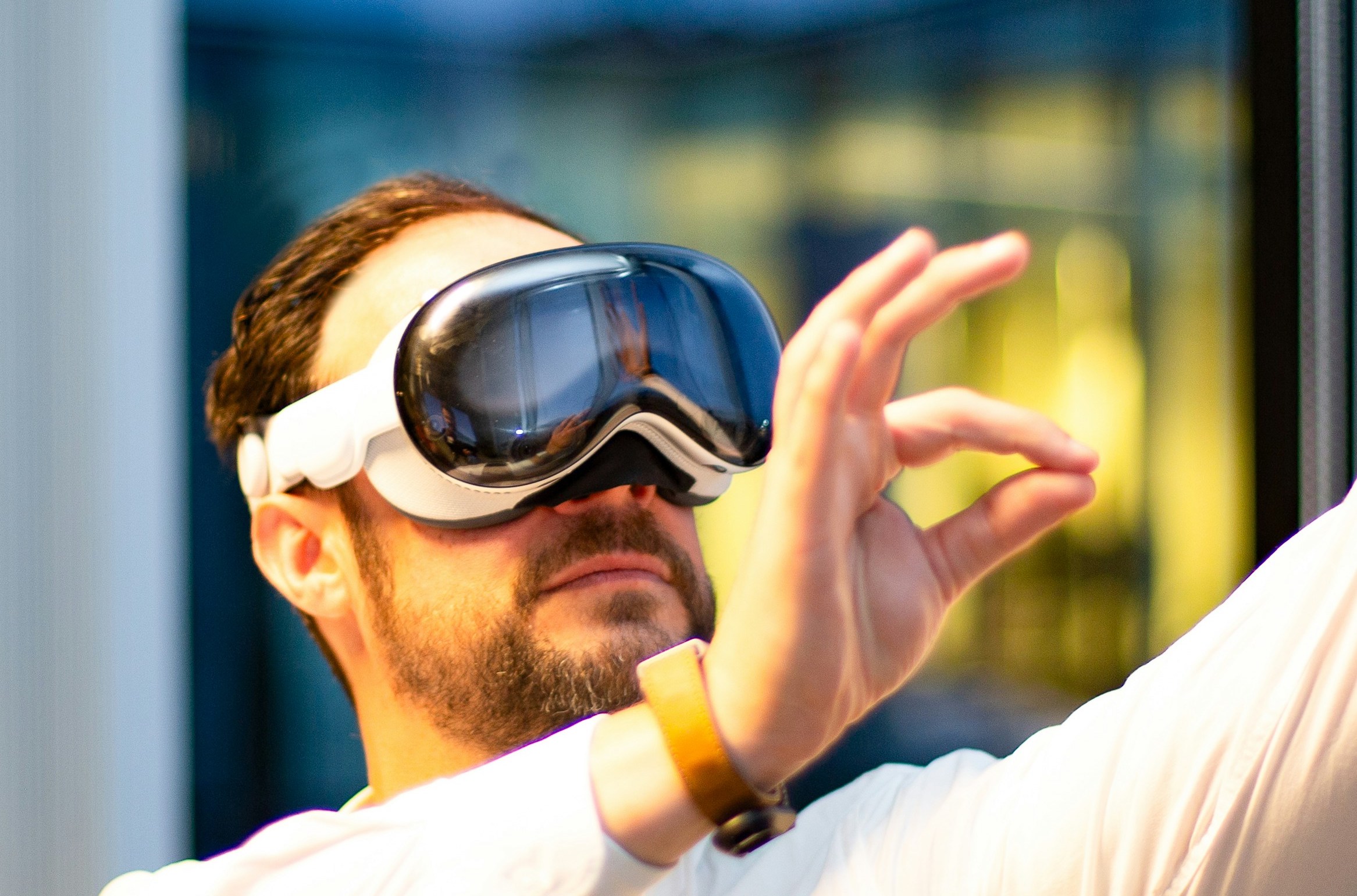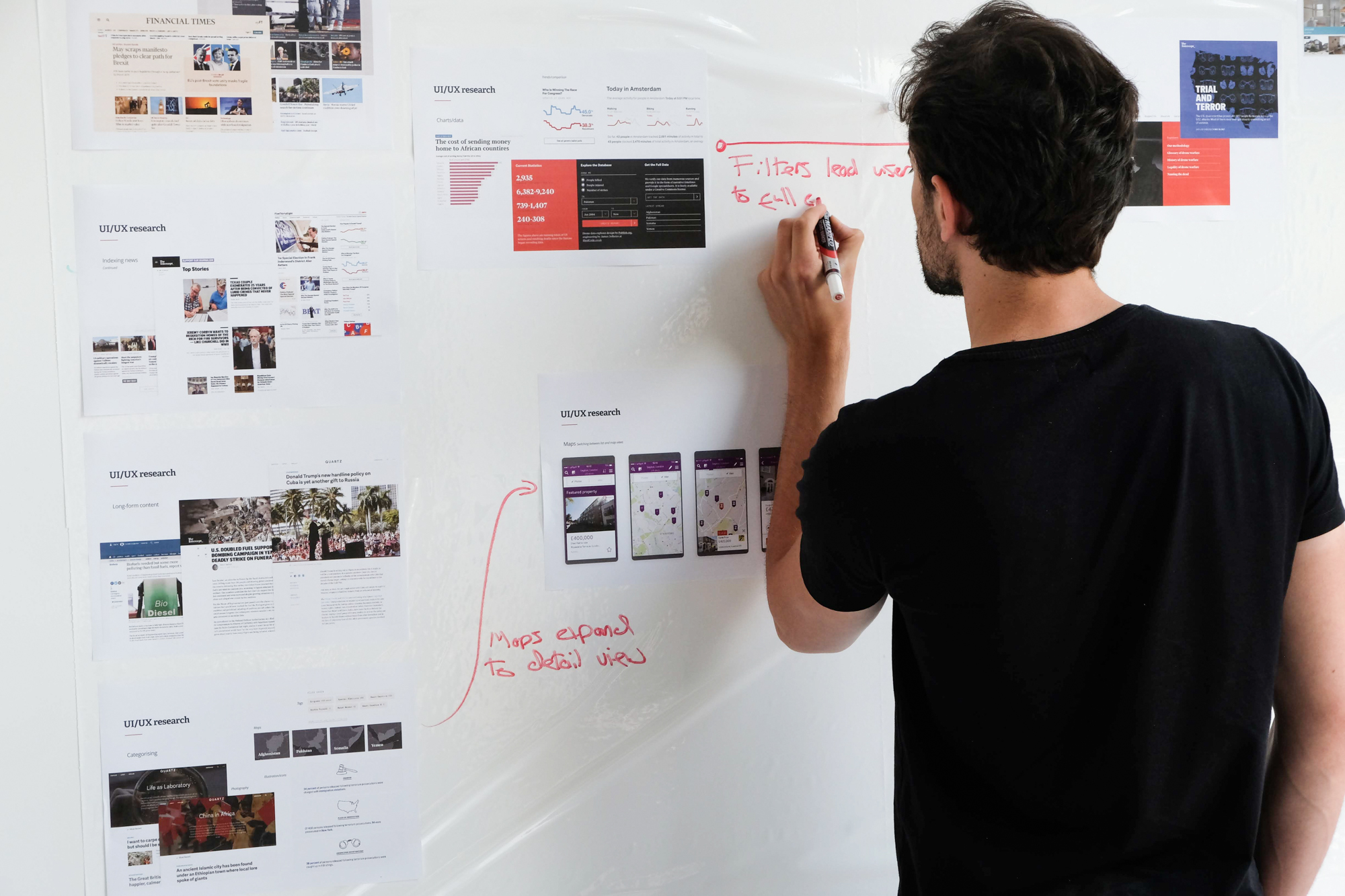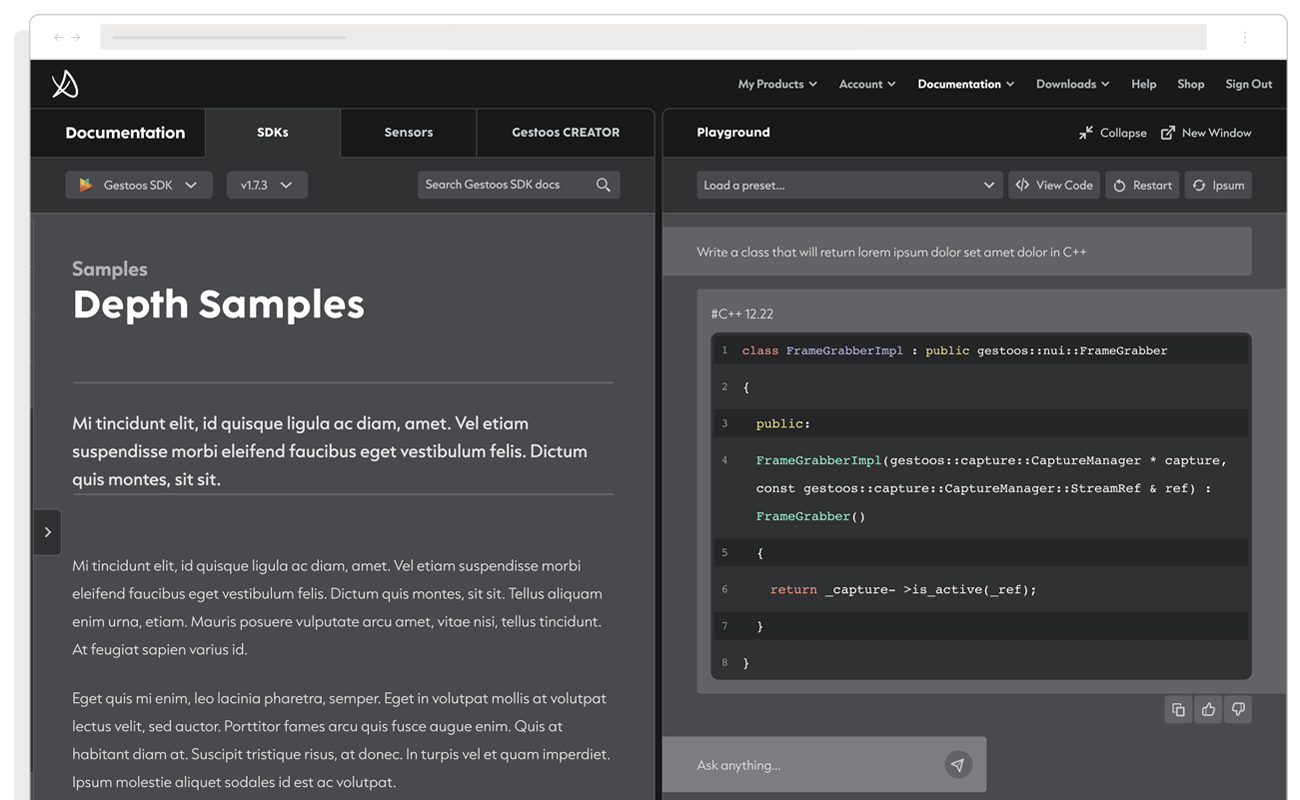What Does the Future of User Interface Design Look Like?

Introduction
The relationship between people and digital experiences via screens is a constant dialogue of design. And that language is always changing. Remember, the first computers didn’t have keyboards, but operated with punchcards. With the rise of personal computers in the late 20th century, keyboards and mouse were the main source of interaction. And then came the mobile experience via Blackberry with its tiny but typeable keyboards. But technology has this nasty habit of constantly moving and the iPhone hit the market, quickly changing the game with its mobile interface; a touch based interface. When asked about his first impressions of the new product, the CEO of Microsoft has this to say
“… It doesn’t appeal to business customers because it doesn’t have a keyboard, which makes it not a very good email machine.”
Steve Ballmer
Emerging & improving technologies are putting pressure on traditional UI interfaces, asking the question: do our interaction experiences need to change? Should they change? In this article, we will explore the key trends, the role of artificial intelligence (AI), and the impact of augmented reality (AR) and virtual reality (VR) on UI design.
The Role of UX in the Shifting Interface Landscape

As the landscape of user interfaces continues to evolve, the role of user experience (UX) professionals becomes increasingly critical. UX designers must navigate the shifting terrain, ensuring that new interfaces and experiences are not only technologically innovative but also user-centric, intuitive, and inclusive.
One of the primary responsibilities of UX professionals is to understand user behaviour and preferences in the context of these new interfaces. By conducting user research, gathering insights, and analysing data, UX designers can identify the most effective ways to integrate emerging technologies into user interfaces while minimising friction and maximising usability.
UX designers must also consider the learning curve associated with adopting new interfaces. As users transition from familiar paradigms to novel interaction models, such as conversational or gesture-based interfaces, UX professionals must design onboarding experiences and educational resources that facilitate a smooth and enjoyable learning process.
Furthermore, UX professionals play a crucial role in helping organisations navigate the costs and complexities associated with implementing cutting-edge UI solutions. By leveraging their understanding of user needs and behaviour, UX designers can make informed recommendations on where to invest resources, prioritising features and functionalities that deliver the greatest value to users and businesses alike.
UX designers can also contribute to cost optimisation by advocating for the use of existing, proven UI patterns and techniques where appropriate. By striking a balance between innovation and familiarity, UX professionals can help organisations deliver compelling user experiences while minimising unnecessary expenditure on unproven or overly complex solutions.
As the digital world becomes increasingly computational and intelligent, UX professionals must also consider the ethical implications of AI-driven interfaces. By advocating for transparency, fairness, and user agency, UX designers can help ensure that the benefits of these technologies are realised while mitigating potential risks and unintended consequences.
AR/VR and the Immersive Experience

Augmented reality (AR) and virtual reality (VR) are a unique medium in UI design. Recent developments, such as Apple’s Vision Pro and Meta’s Quest Pro and Wayfarer, show both the potential and pitfalls for both the user experience and the market adoption. As AR and VR become more prevalent, designers will need to adapt their skills and approaches to accommodate these new realities. They will need to consider factors such as spatial awareness, gesture-based interactions, and the seamless blending of virtual and physical elements to create truly immersive experiences.

AR and VR do have the potential to grow and work out the “kinks” (such as eye strain, motion sickness, disorientation, and even some cases anxiety) but it does highlight an important truth about user interface design; a tactile factor should be considered when designing the interface experience. The full benefit of AR/VR is best suited for controlled environments, with AR being utilised in features very strategically.
AI: Coming to a Future Near You

AI, Artificial Intelligence. It’s here whether you like it or not. Less than 2 years ago, ChatGPT released the groundbreaking technology; an advanced natural language model that can mimic humanlike conversation. AI has influenced every facet of technology, especially how we interact with it.
AI Interfaces
AI powered conversational interfaces are rapidly gaining popularity as a way for users to interact with digital systems. AI chatbots and virtual assistants are becoming increasingly sophisticated, capable of engaging in human-like conversations and providing personalised support and recommendations.
The rise of AI chat interfaces presents both opportunities and challenges for designers. These interfaces will have two primary mediums, a combination of typing and voice commands. Designers must craft conversational flows that are intuitive, contextually relevant, and aligned with user goals and expectations. They must also consider factors such as personality, tone, and cultural nuances to ensure that conversations feel natural and engaging.

Sometimes it’s finding the right balance between human UI and generative AI, as Browser did with it’s most recent work with PreAct.
To create successful AI chat interfaces, designers will need to work closely with conversational UI specialists, data scientists, and content strategists. They will also need to leverage user research and testing to continuously refine and optimise the experience based on real-world user feedback and behaviour.
Generative UI
Generative UI represents a potential shift in how user interfaces are designed and delivered. Powered by AI and machine learning, generative UI systems can dynamically create and adapt user interfaces in real-time based on user needs, preferences, and context.
Unlike traditional UI design, where interfaces are manually created, generative UI allows for interfaces to be generated on-the-fly, tailored to the specific requirements and characteristics of each individual user. This approach has the potential to revolutionise personalisation, accessibility, and user engagement. That said, it does have some limitations.
One significant concern with generative UI is maintaining a coherent experience across dynamically generated interfaces. While personalization is valuable, users still expect a certain level of consistency and familiarity when interacting with digital products.
Additionally, the real-time nature of generative UI may introduce performance and scalability issues. Generating interfaces on-the-fly requires significant computational resources, and ensuring that the system can handle high volumes of users and requests without compromising speed or reliability will be a key technical hurdle to overcome. As reported in mid-May Microsoft’s carbon emission has increased significantly:
“Microsoft’s carbon emissions up nearly 30% thanks to AI”
Dan Robinson – The Registar
AI Devices
The integration of AI into physical devices is opening up new possibilities for intuitive and seamless interactions. This year, there was the Humane AI pin and the Rabbit R1 released onto the market, it’s worth noting that with his 18.9m viewers, YouTube celebrity Marques Brownlee delivered a scathing review of the R1’s usability and interaction back in April 2024.
While AI powered devices and functionality have been part of our life for a few years at this point in the form of voice control home products and their AI personalities via Siri and Alexa, these new devices represent the first wave of a more serious effort to bring a distinct AI into your pocket. These devices also represent the learning curve “pocket ready” AI needs to overcome, demonstrating the problems outweigh the value it was trying to achieve.

As AI-powered devices become more prevalent, designers will need to consider new interaction paradigms that blend physical and digital experiences seamlessly. This will require a deep understanding of user context, behaviour, and expectations, as well as close collaboration with engineers and data scientists to create intelligent, adaptive, and user-centred experiences.
Gesture-Based Interfaces: Promises and Pitfalls

Gesture-based user interfaces, popularised by films like Minority Report, have long captured the imagination of designers and technologists. The prospect of controlling digital experiences through intuitive hand and body movements is undeniably alluring. However, despite the hype, gesture-based interfaces have faced significant challenges in real-world implementation.
One of the primary limitations of gesture-based interfaces is their lack of accuracy and precision compared to traditional input methods like buttons or touchscreens. Gestures can be ambiguous, and the system must constantly filter out unintended movements, leading to a higher likelihood of errors and frustration for users. Additionally, gesture-based interfaces often require more computational resources to process and interpret user actions, which can impact performance and responsiveness.
Another concern is the physical demands placed on users. Prolonged use of gesture-based interfaces can lead to fatigue, particularly when gestures involve raising arms above the heart or performing repetitive motions. This can limit the practical applications of gesture-based interfaces in professional settings where extended use is required.
Accessibility is also a significant consideration. Gesture-based interfaces may not be inclusive for individuals with limited mobility or fine motor control, as they rely heavily on precise movements. Designers must carefully evaluate whether gesture recognition improves accessibility or presents additional barriers for certain user groups.
Despite these challenges, the potential for gesture-based interfaces remains compelling, particularly in specific domains such as gaming, entertainment, and immersive experiences. As technology advances, we may see more sophisticated and responsive gesture recognition systems that mitigate some of the current limitations. However, designers must approach gesture-based interfaces with a critical eye, carefully weighing the benefits against the potential drawbacks and ensuring that they enhance, rather than hinder, the user experience.
Or, Perhaps None of the Above Have Got it Right, Yet
Everything you’ve just read about the future of user interface design could be wrong. While the potential for emerging technologies like AR/VR, AI, and motion touch to revolutionise how we interact with digital systems is undeniable, it’s crucial to recognise that predicting the future of technology is like looking into a clouded crystal ball; we can only see vague shapes of emerging technologies and their implications.
Maybe it will be holograms based interactions, a star trek inspired future, but with more hovering 2d spreadsheets. Or maybe it will be Neuralink, the ability to control devices and communicate using thoughts alone would represent a paradigm shift in human-computer interaction. I do wonder how it will handle intrusive thoughts…
The same holds true for other emerging technologies like AR/VR and AI. While they undoubtedly have the potential to transform how we design and interact with digital systems, the specifics of how and when this will happen are still very much up in the air. Will generative AI replace human designers, or will it simply become another tool in their arsenal? Will AR/VR remain a niche technology, or will it become the primary way we interact with digital content? Only time will tell.
One thing is certain: the role of designers and UX professionals in shaping this future will be more critical than ever. By staying informed (and on your toes) about emerging technologies, thinking critically about their implications, and always keeping the needs and desires of users at the forefront, we can help ensure that the future of user interface design is one that benefits everyone.